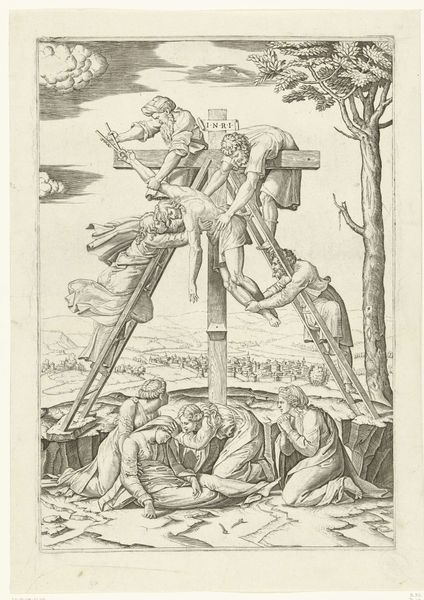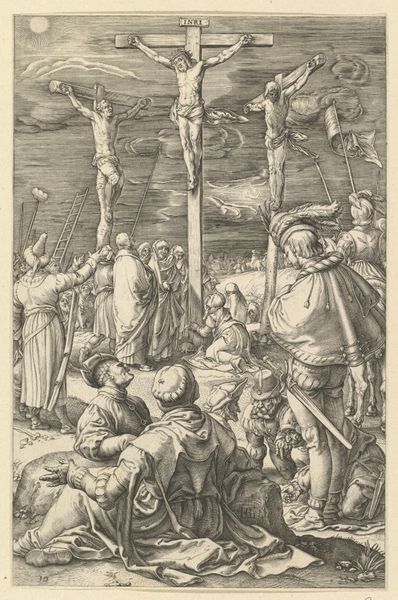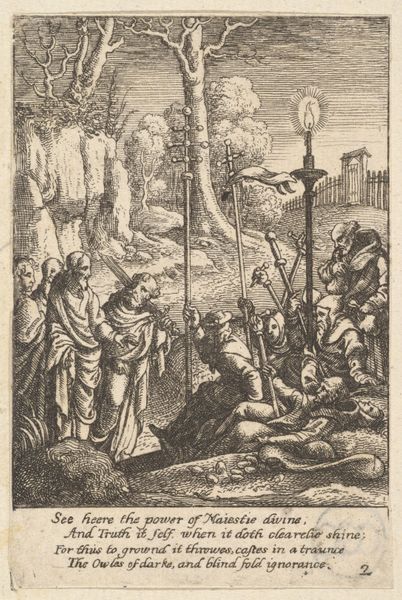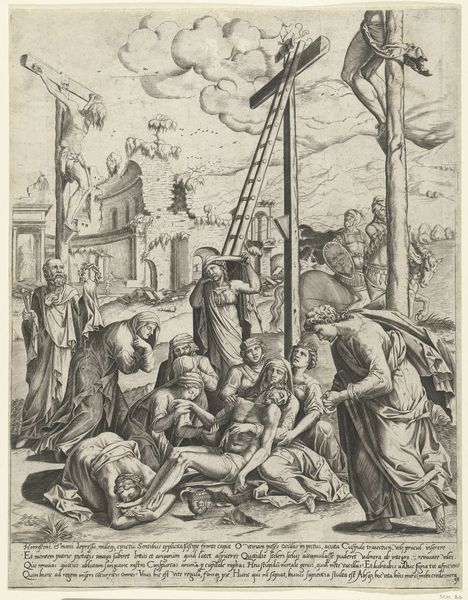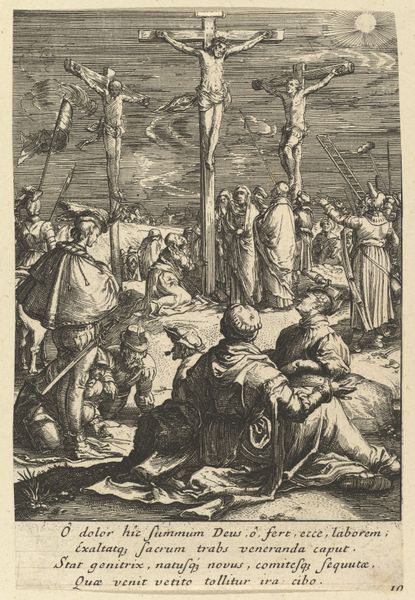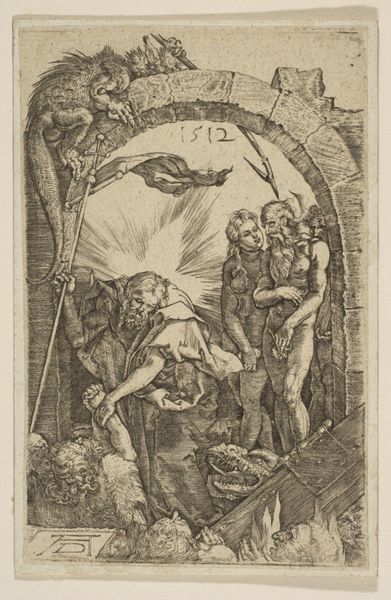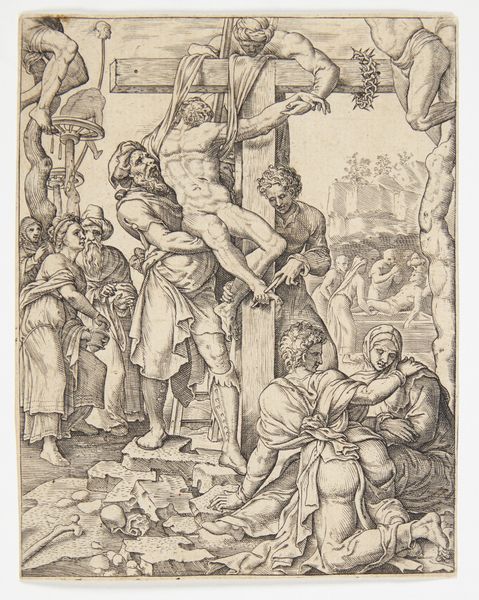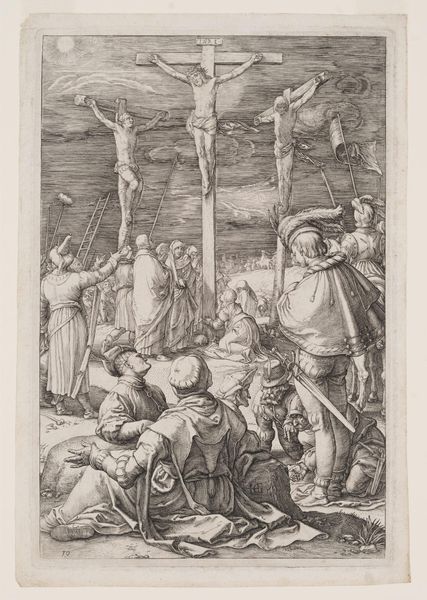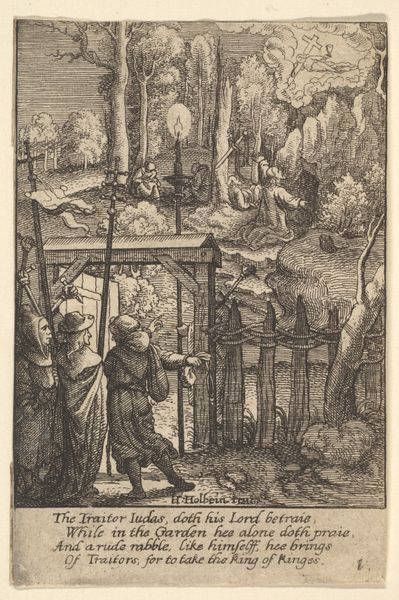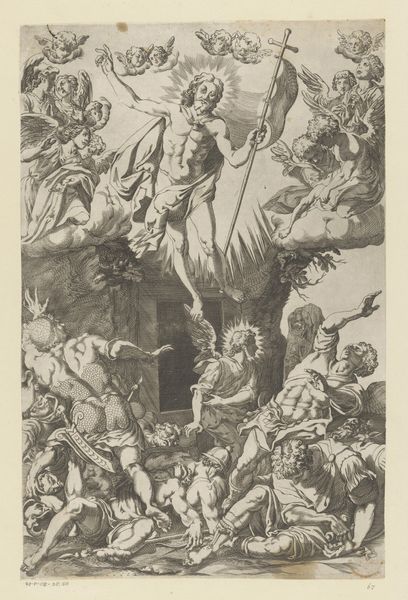
drawing, print, engraving
#
drawing
#
narrative-art
#
baroque
#
pen drawing
# print
#
figuration
#
line
#
crucifixion
#
history-painting
#
engraving
Dimensions: Sheet: 3 9/16 × 2 3/8 in. (9 × 6 cm)
Copyright: Public Domain
Wenceslaus Hollar made this small engraving, *Crucifixion*, using metal and acid, sometime in the 17th century. This was a period of significant religious conflict, which is reflected in Hollar’s stark imagery. Engraving is an intricate, labor-intensive process. The artist uses a tool called a burin to physically carve lines into a metal plate. This plate is then inked and used to make prints, which can be distributed widely. Here, Hollar uses the incisive quality of the engraved line to powerful effect. He depicts the crucifixion scene, but in a way that is highly critical of religious figures; he uses the form to make a powerful political statement, suggesting that some members of the church were as culpable as common criminals. Hollar’s choice of printmaking allowed for the broad dissemination of his critique. The very act of reproduction became a form of resistance. This challenges the idea of art as a precious, unique object. Instead, he uses the medium as a vehicle for social commentary.
Comments
No comments
Be the first to comment and join the conversation on the ultimate creative platform.
